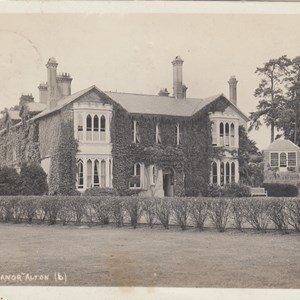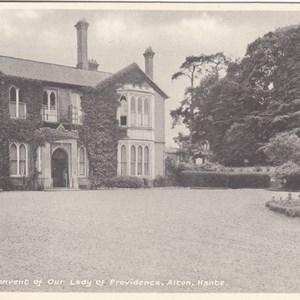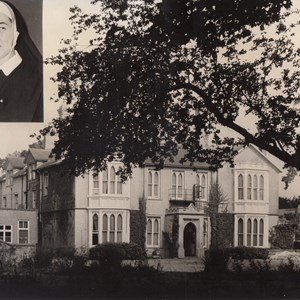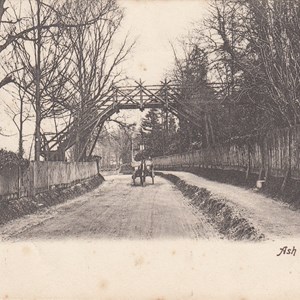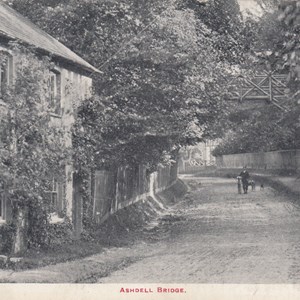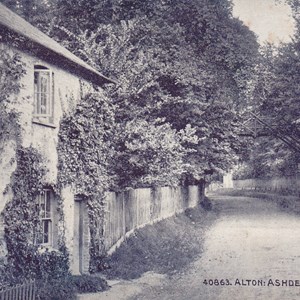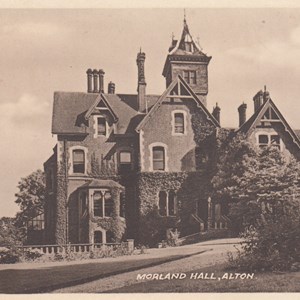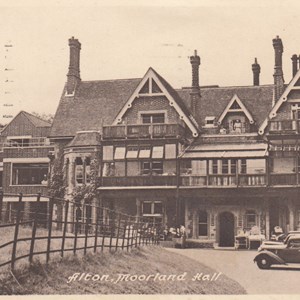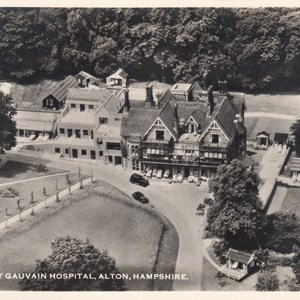Alton's Big Houses
I have used the title of a chapter in The Story of Alton to bring together images of the 'Manor' houses, grounds, and people who lived or worked in or on them.
Anstey Manor
It has been claimed by several sources that this house was built in the late 19th century by Gerald Hall, son of Henry Hall, owner of one of Anstey's breweries. However there does appear to have been some sort of dwelling on this site for at least 30 years, probably many more. I presume that the house was renovated or perhaps extended ready for when Mr Hall took residence and that has been confused with him building it. I am unsure when Mr Hall moved in. A Newspaper article from late 1896, describes Anstey Manor as 'the new residence of Gerald Hall esq'.
Dorothy Hall (Gerald's daughter) volunteered with the British Red Cross during the First World War. Her service card records her length of service from July 1916 until February 1919 and lists her permanent address as Anstey Manor.
Gerald Hall, lived in the house until he died in September 1940, by that time the world was at war, leading to the requisitioning of large houses such as Anstey Manor. This lead to Canadian Forces being posted there with some of the officers enrolling their daughters at the Convent School which was at that time located in Normandy Street.
Towards the end of 1945 the school had begun to outgrow the site on Normandy Street, with the war over the Nuns remembered the manor house, presuming it must by now be empty, they made enquiries and discovered the Hall family still owned the manor and that it was indeed for sale.
It was as is so often the case not that easy! The Town Council were also interested in purchasing the Manor House and the 69 acres of adjoining land, after some negotiation it was decided the Council would make an offer to buy all of it and if successful they would sell part of it (The Manor house and approx 11 acres) to the Sisters for half of the purchase price.
The Council bid was successful, purchasing the Manor and grounds for £12,000, the Sisters paid their share, collected the keys on the 1st of January 1946 and immediately set about getting it ready for the students to arrive for the new term on 3rd February.
The school closed in July 2024, it was attributed to a variety of factors including a decline in pupils and economic reasons. The school and its grounds were subsequently put up for sale.
Ashdell
Ashdell was built for Frederick Crowley by J.H.& E. Dyer in the early 1870s. At that time, a footpath ran through the property in front of the house; this was diverted around the back of the house and down a newly built flight of steps, which are still there today. A rustic bridge was also built to allow easy access to the Kings Pond area for the family.
Following the passing of Mr Crowley, the house was put up for sale. In 1911 it was purchased by Mr Guy Ferrand, a farmer who was at that time living a few miles south of Selborne. He changed the name of the house to Morland Hall (I have also seen it spelt Moorland Hall & Moreland Hall on postcards). It is claimed Mr Ferrand had the rustic bridge removed upon purchasing the estate.
In September 1922, that the Ferrand family had decided to leave the area and relocate to a new estate near Andover that they had recently purchased. From there it appears there is a grey area as to who owned or indeed lived at Morland Hall, however by 1924 it was vacant and up for sale.
The next owner was Sir Henry Gauvain, the medical Superintendent of Lord Mayor Treloar Hospital & College. He opened a private clinic there in 1925 to help patients that were likely to benefit from artificial light therapy to treat their ailments, primarily those with external tuberculous. Sir Henry passed away in Janaury 1945.
The house came under the control of the NHS in the late 1940s and was renamed The Henry Gauvain Hospital; however, by the early 1960s, the building was deemed surplus to requirements, which led to the building being demolished in 1969 to make way for the Ashdell Park development.
You can still see the trees that would have lined the driveway leading to the house today; they stand on either side of Crowley Drive as you make your way along it from Ashdell Road.

